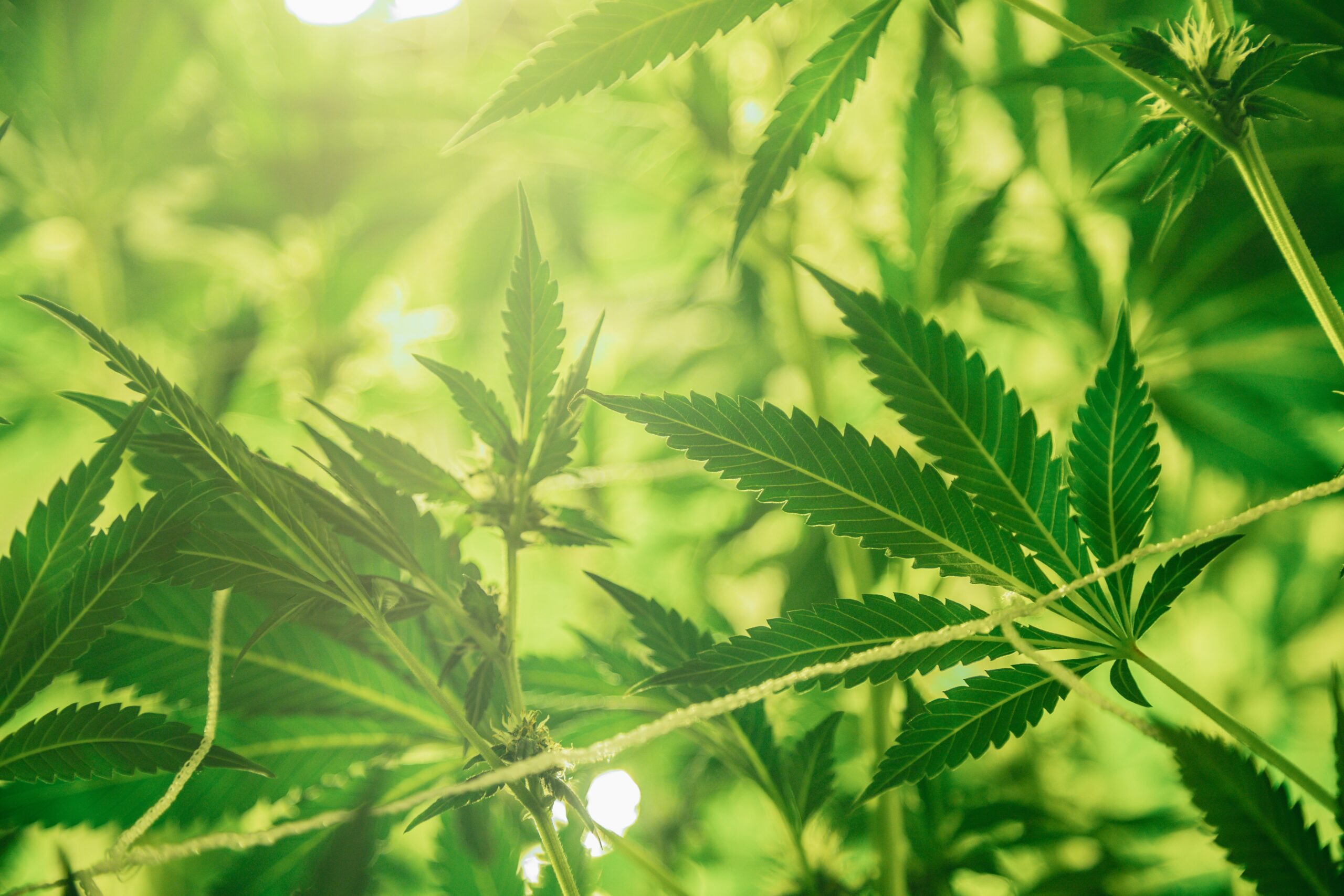Embarking on a captivating journey through time, we delve into the intricate tapestry of hemp’s historical significance. This unassuming plant has left an indelible mark across civilizations, threading together cultures and eras in a narrative of innovation, tradition, and adaptability. With each chapter of its story, hemp reveals a tapestry woven with threads of practicality, spirituality, and commerce. As we navigate this exploration, our aim is to unravel the layers of its ancient roots and unveil the diverse roles it played throughout history. Our voyage isn’t just a study of the past; it’s a bridge between bygone eras and our present understanding. In this blog post, we embark on a voyage that uncovers the depths of hemp’s contributions, from textiles to spirituality, trade to healing, tracing its enduring legacy through time.
Early Cultivation and Practical Applications
The tendrils of hemp’s history reach deep into the past, as revealed by archaeological discoveries that unveil its cultivation dating back millennia. From ancient settlements to burial sites, remnants of hemp plants and artifacts speak to its profound presence in the lives of early civilizations. These traces of the past offer a tangible connection to the roots of hemp’s journey and its enduring relationship with humanity.

Across the expanse of time, hemp’s fibers served as the backbone of ingenuity for ancient civilizations. Through careful processing and craftsmanship, these societies transformed hemp into textiles, ropes, and a myriad of utilitarian items that were essential for daily life. The artistry in weaving hemp into functional materials not only showcased human adaptability but also laid the groundwork for industries that would shape economies and societies for generations to come.
In the heart of Ancient China, hemp emerged as a cultural cornerstone, leaving an indelible mark on the fabric of society. Beyond its role as fibers for clothing and ropes, hemp’s influence extended to the creation of paper—an invention that revolutionized communication and knowledge dissemination. The versatility of hemp in Ancient China encompassed realms beyond the practical, encompassing the realms of culture, knowledge, and innovation.
In the ancient landscapes of Mesopotamia and Egypt, hemp’s practicality took on diverse forms, leaving traces that tell stories of craftsmanship and resourcefulness. In pottery, hemp fibers reinforced vessels, enhancing their durability. In clothing, hemp fabric adorned individuals with sturdy attire capable of withstanding the rigors of daily life. Moreover, in construction, hemp played a role in creating bricks and other building materials that endured the test of time. These specific instances showcase the extent to which hemp’s utility permeated through the daily lives of these civilizations.

Hemp’s presence in traditional medicine systems of ancient cultures.
The pages of history unveil a rich tapestry of hemp’s role in ancient healing practices, demonstrating its deep connection to well-being. Ancient cultures recognized the potential of hemp to offer therapeutic benefits, marking the beginning of its journey as a natural remedy that would traverse centuries. Through ancient texts, manuscripts, and herbal lore, we glimpse into the past and witness the reverence with which hemp was regarded for its healing properties.
Hemp use as a remedy for various ailments in Ayurveda, Traditional Chinese Medicine, and other indigenous healing practices.
Ayurveda, Traditional Chinese Medicine, and various indigenous healing traditions valued hemp as a precious resource in the pursuit of health. In these systems, hemp was seen as a multifaceted remedy, capable of addressing a spectrum of ailments. From pain relief to inflammation reduction, hemp was harnessed as a holistic solution, embodying the wisdom of nature that resonated with ancient healers.
Ancient societies harnessed hemp’s potential to alleviate pain, inflammation, and other health concerns.
The storied past of hemp’s medicinal uses shines a light on its remarkable potential to soothe both physical and spiritual discomfort. Ancient civilizations recognized hemp’s efficacy in alleviating pain, easing inflammation, and promoting overall well-being. The historical precedent set by these cultures laid the foundation for the modern exploration of hemp’s therapeutic properties.

Hemp in ancient healing rituals and spiritual practices.
Beyond its practical applications, hemp held a sacred place in the tapestry of ancient healing rituals and spiritual ceremonies. It was believed that hemp’s qualities extended beyond the physical realm, touching the spiritual and emotional aspects of human existence. Incorporating hemp into rituals provided a bridge between the material and the metaphysical, symbolizing a harmonious union between nature and the human experience.
Hemp as a Symbol of Spirituality and Ritual
Traversing the annals of history, we unveil the profound spiritual and cultural resonance that hemp held in diverse ancient civilizations. From Native American tribes to ancient Eastern cultures, hemp’s symbolism transcended borders and belief systems. Its significance lay not only in its practical utility but also in its intrinsic connection to the sacred and the sublime.
In the sacred spaces of ancient rituals and ceremonies, hemp emerged as a potent conduit between the earthly and the divine. Its presence was woven into the fabric of religious practices, serving as an emblem of connection to higher realms. Rites of passage, from birth to death, were marked by the incorporation of hemp, signifying transitions in the journey of life and beyond.
Hemp’s symbolism surpassed its physical attributes, embodying a bridge between the seen and the unseen, the material and the metaphysical. In its fibers, ancient cultures perceived a conduit that facilitated communion with the natural world and the divine forces that governed it. This symbolism resonated deeply with those who sought harmony with the cosmos and a connection with the mysteries of existence.
The reverence for hemp as a sacred plant shaped not only spiritual beliefs but also cultural identities. It influenced art, customs, and the way ancient societies interacted with the world around them. Hemp became a thread that wove together the tapestry of cultural practices, binding individuals and communities to the heritage of their ancestors and the wisdom of the ages.
Hemp’s Role in Trade and Commerce
The pages of history reveal a captivating tapestry of trade routes that carried the bounty of hemp across vast distances. As merchant caravans traversed ancient landscapes, they carried with them not only goods but also the legacy of hemp. These routes acted as conduits, connecting civilizations and cultures through the exchange of hemp fibers, textiles, and other products, enriching the tapestry of human interaction.
In regions where hemp found its roots, its impact on the economic landscape was profound. As a valuable commodity, hemp cultivation and trade contributed to local economies, fostering growth and sustenance. Communities built livelihoods around the cultivation and processing of hemp, establishing a dynamic relationship that underscored its economic significance.
Hemp’s value transcended borders, sparking cross-cultural interactions and forging economic relationships that spanned the expanse of civilizations. The exchange of hemp and its products facilitated connections between distant lands, enriching cultures and creating a global tapestry of trade. As merchants engaged in commerce, they not only exchanged goods but also ideas, customs, and innovations.
Historical records serve as portals into the bustling markets and trading hubs where hemp played a pivotal role. From ships laden with hemp-based products sailing ancient seas to merchant caravans traversing the Silk Road, these records chronicle the tangible presence of hemp in trade and commerce. These glimpses into the past illuminate the intersections where cultures converged, driven by the allure of hemp’s multifaceted value.
Decline, Prohibition, and Rediscovery
The ebb and flow of history witnessed the gradual waning of hemp’s prominence, influenced by a confluence of factors. As new materials and technologies emerged, hemp’s role in various industries began to wane, leading to a decline in its cultivation and utilization. The march of progress brought both innovation and challenges, which shaped the course of hemp’s narrative.
The winds of change swept across societies, as industrialization and shifting societal attitudes heralded a transformation in the way hemp was perceived and utilized. The allure of alternative materials, coupled with changing consumer preferences, cast a shadow over hemp’s once-vaunted status. Industrial revolutions and evolving manufacturing methods played a role in the reshaping of industries, redirecting the course of innovation away from hemp.
A dark chapter in hemp’s history unfolded with the era of prohibition, as legislative measures cast a shadow over its cultivation and usage. Regulatory restrictions and misconceptions led to a stigmatization of hemp, rendering it marginalized and misunderstood. The era of prohibition stifled the potential of hemp, obscuring its rich history and its vast array of applications.
From the ashes of prohibition, a resurgence of interest in hemp emerged, fueled by a collective desire for sustainability and eco-friendliness. As the world grapples with environmental challenges, hemp’s attributes as a renewable resource have garnered renewed attention. Innovators and advocates champion hemp’s potential to foster a sustainable future, reimagining its applications in diverse sectors, from textiles to construction and beyond.
Modern Applications Rooted in Ancient Wisdom
Advancements in scientific understanding have shed light on the validity of hemp’s historical applications. Modern research has uncovered the bioactive compounds within hemp, affirming its potential to alleviate various health concerns. As science uncovers the mechanisms behind hemp’s effects, it bridges the gap between ancient wisdom and present-day knowledge, validating the insights of our forebears.

The echoes of ancient wisdom reverberate through the corridors of innovation, influencing present-day applications of hemp in myriad industries. From wellness to sustainable construction, the knowledge of our ancestors informs the utilization of hemp in novel ways. By embracing the lessons of history, industries are reshaping their practices to align with nature and the holistic benefits that hemp offers.
As modern society grapples with environmental challenges, the eco-friendly nature of hemp has come to the forefront. Hemp’s attributes as a rapidly renewable resource that requires minimal pesticides and supports soil health align with contemporary sustainability goals. Its potential to mitigate carbon emissions through various applications adds a layer of urgency to the exploration of hemp’s diverse uses.
In the modern landscape, hemp’s versatility shines through in innovative applications that span industries. In textiles, hemp fibers create durable and sustainable fabrics, breathing new life into ancient practices. In construction, hempcrete emerges as a green alternative, showcasing the potential to reshape the way we build. In wellness products, hemp-derived compounds offer holistic solutions rooted in both ancient wisdom and modern science, providing a testament to hemp’s enduring relevance.
Preserving and Celebrating Hemp’s Heritage
The tapestry of history is woven with threads of cultural heritage, and hemp holds a cherished place within it. Preserving the knowledge, traditions, and practices surrounding hemp is a testament to honoring our past and safeguarding our shared human story. In doing so, we ensure that the insights of our ancestors continue to enrich our understanding of hemp’s significance.
Numerous initiatives and organizations have taken up the mantle of safeguarding hemp’s historical legacy. From archives that house ancient texts to museums that showcase artifacts, these efforts ensure that the wisdom of the past is accessible to future generations. Through their dedicated work, they celebrate hemp’s contributions and ensure that its story endures.
Cultural events and festivals have emerged as vibrant celebrations of hemp’s enduring legacy. These gatherings offer a platform to showcase hemp’s historical uses, its modern applications, and its potential for a sustainable future. From exhibitions that highlight its diverse uses to workshops that delve into its cultivation, these events bridge the gap between the past and the present, educating and inspiring attendees.
As we traverse the pages of history, a call to action resounds—a call to engage with the rich tapestry of hemp’s past. By immersing ourselves in its history, we glean insights that can inform our present choices and shape our future. Whether through exploration of historical records, participation in cultural events, or supporting preservation efforts, each individual has a role to play in upholding hemp’s legacy and the wisdom it carries.
Let’s wrap up what we learned
The journey through the tapestry of hemp’s history has revealed a tapestry woven with threads of practicality, spirituality, trade, and innovation. From its early cultivation to its use in ancient medicine and rituals, hemp’s presence was woven into the fabric of diverse civilizations. Through trade, prohibition, and rediscovery, its story endured, shaped by changing attitudes and societal shifts. This journey underscores the lasting impact of hemp throughout history.
Hemp’s multifaceted roles across ancient civilizations mirror its dynamic nature—a nature that transcends time. From textiles to spiritual symbolism, hemp’s contributions spanned diverse domains, leaving a lasting imprint on cultures. As we navigate the modern landscape, this dynamism remains relevant, with hemp’s sustainable attributes aligning with contemporary concerns and industries, such as textiles, construction, and wellness.
As we conclude this exploration, a call to reflection emerges—an invitation to consider the wisdom embedded in hemp’s historical journey. Its legacy urges us to embrace the lessons of the past, recognizing the ways in which sustainable practices can transform our future. By harnessing the potential of hemp in modern applications and advocating for its preservation, we take a step towards weaving a more sustainable, interconnected, and holistic world.





0 Comments